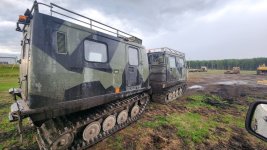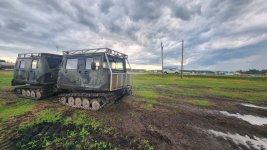BlackPowderBurner
CGN frequent flyer
- Location
- the chesterfield
Fudd lore 
Fudd lore (African)

Fudd lore (African)



Meanwhile, in 1941, the Tisdale brothers, New Zealand sporting goods dealers, ordered an Oberndorf Mauser Model B sporting rifle from Mauser in Nazi Germany, and IT WAS DELIVERED....two years into the war. (see Jon Speed, The Mauser Archive, Collector Grade Publications, 2007, pp 174-175'New Zealand fights' — Poster published by the New Zealand Legation in Washington D.C. in 1942. Artist: A.T. Peel.
View attachment 983315

I didn't notice any of the indigenous troops I saw having any more bad habits than other troops, when it came to shooting, as long as they received "good instruction" from their trainers and got enough time in at the range.Apparently a lot of these people believed that if you set the rear sight to a bigger number, the rifle became more powerful.
You're technically correct, depending on one's definition of "in service". The Brits captured a whack of 'em including four airworthy ones, one of which went to the A&AEE at Boscombe Downs. That's the one in the pic. Was it an issue aircraft, flown in substantial numbers? Nope. But it did get a service number on the tail and was flown by RAF personnel in an official capacity. Is that not "in service"?Pucara was never in RAF service. They test flew a couple captured during the Falklands War only.




Ernest Hemingway once said that, “You have to hurt like hell before you can write seriously”.
Wish I'd had more time to really get some better pics of this BV-206, but had other things to do that day. Swedish Cam? Possibly Canadian? Anyone want to offer an opinion? Surplus, current status: privately owned, leased to AB Forestry, hauling smoke eaters and their gear back and forth from the fire line near Red Earth, AB.
These are just great, tough little go-anywhere vehicles. 45 years on, still in production, largely unchanged. Not many vehicles have that kind of track record.
View attachment 992001View attachment 992005
Oh these are cool indeed. They are used in Antarctica, so that tells you something about their reliability. More info: https://en.wikipedia.org/wiki/Bandvagn_206Wish I'd had more time to really get some better pics of this BV-206, but had other things to do that day.
Swedish Cam? Possibly Canadian? Anyone want to offer an opinion? Surplus, current status: privately owned, leased to AB Forestry, hauling smoke eaters and their gear back and forth from the fire line near Red Earth, AB.
These are just great, tough little go-anywhere vehicles. 45 years on, still in production, largely unchanged. Not many vehicles have that kind of track record.
View attachment 992001View attachment 992005
It is a mite muddy in that part of Alberta. LOLWish I'd had more time to really get some better pics of this BV-206, but had other things to do that day.
Swedish Cam? Possibly Canadian? Anyone want to offer an opinion? Surplus, current status: privately owned, leased to AB Forestry, hauling smoke eaters and their gear back and forth from the fire line near Red Earth, AB.
These are just great, tough little go-anywhere vehicles. 45 years on, still in production, largely unchanged. Not many vehicles have that kind of track record.
View attachment 992001View attachment 992005
A lot of us grew up with men like this still around, and guys in their fifties similar although WWII vets and what was their story?Thanks for that, Tony. I had no idea. This caught my eye:
It's been said that one can't be a really sharp comedian without a tragic background of some kind - a terrible childhood is usually the prerequisite. Interesting how some people deal creatively with the horrible things they run into in their lives.
Wish I'd had more time to really get some better pics of this BV-206, but had other things to do that day.
Swedish Cam? Possibly Canadian? Anyone want to offer an opinion? Surplus, current status: privately owned, leased to AB Forestry, hauling smoke eaters and their gear back and forth from the fire line near Red Earth, AB.
These are just great, tough little go-anywhere vehicles. 45 years on, still in production, largely unchanged. Not many vehicles have that kind of track record.
View attachment 992001View attachment 992005
They get used in the patch fairly often, if you are ever near Valleyview you cant help but see themIt is a mite muddy in that part of Alberta. LOL








































